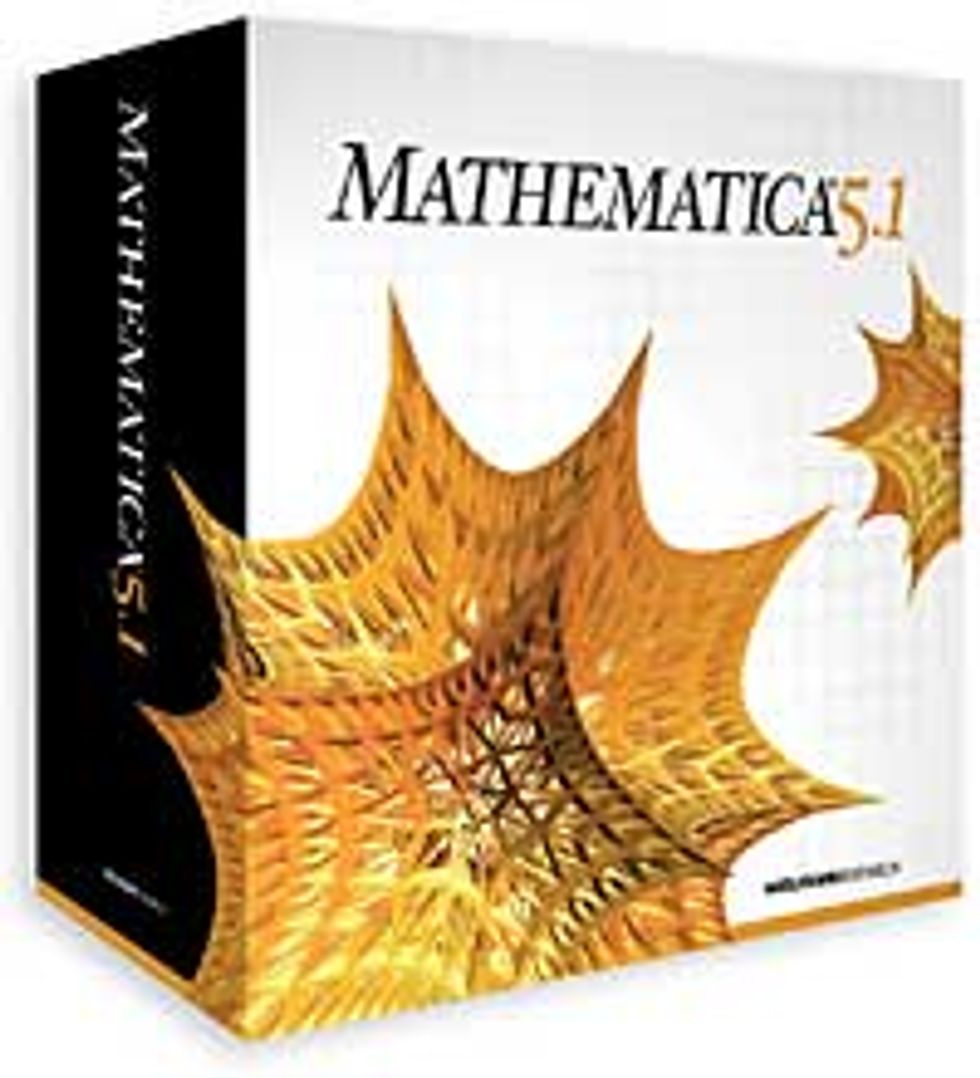First released in 1988, Mathematica has grown into a technical computing platform of enormous scope and capability. It has more than 1000 symbolic and numerical math functions, superb graphics capabilities, extensive editing capabilities for technical documents, and an array of other handy bells and whistles. It has spawned hundreds of books, ranging from how-to manuals to research monographs. Nearly a thousand scientific and engineering papers cite the program.
Mathematica continues to grow and improve with age. I found version 5.1 to be a significant upgrade. Dozens of new features will probably appeal to novice users and technical gurus alike. Beginners are likely to appreciate the new ability to import worksheets created in Microsoft Excel, a business-oriented program that, while easy to use, has few mathematics and graphics functions. EquationTrekker is an elegant new feature that allows users to explore the behavior of solutions of differential equations; I plan to use it in my lectures next semester.
Mathematics 5.1:
Wolfram Research Inc., Champaign, Ill.; US $1880 for commercial users; academic and government discounts available.
Other enhancements are bound to appeal more to advanced users. Mathematica can now link to databases such as Oracle and Microsoft Access, and import and display huge quantities of numerical data more rapidly than previous versions. A new built-in facility for creating graphical user interfaces offers "hundreds of types of widgets and mechanisms for creating wizards"--semiautomated interfaces for specific tasks--according to the program's documentation.
But it would take a real wizard, or at least a user with considerable programming experience, to utilize many of the advanced features in the first place. Novices should be forewarned about the tough learning curve, which is only partly remedied by an extensive help facility. But engineering, math, and physical science students should learn to use what is, by now, an essential tool of their trades.
Most experienced users, I suspect, work in institutions that have Mathematica site licenses and so have already received the upgrade. Whether others are willing to spend the considerable funds to move beyond version 5.0 is a different matter, but they should examine the upgrade's new features nevertheless.
About the Author
Kenneth R. Foster is a professor in the University of Pennsylvania's bioengineering department and a member of the IEEE Spectrum editorial board.
